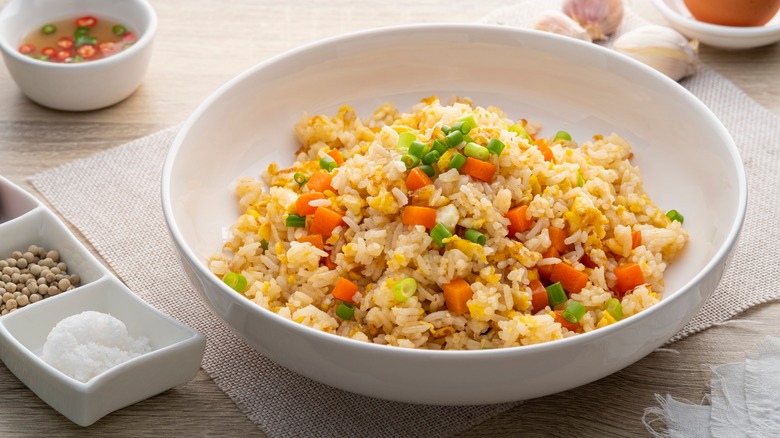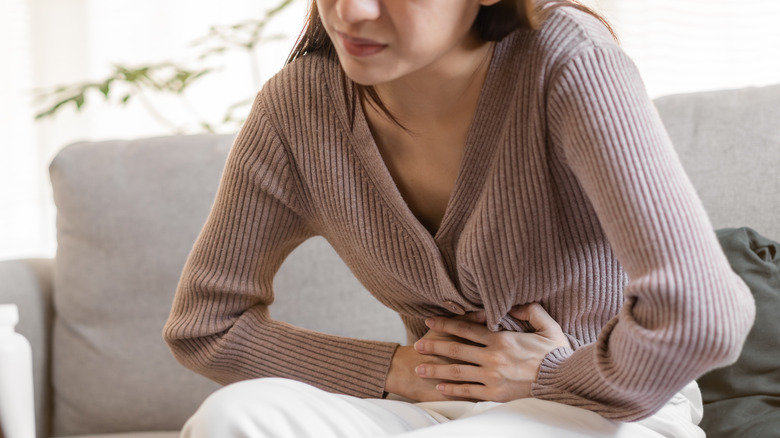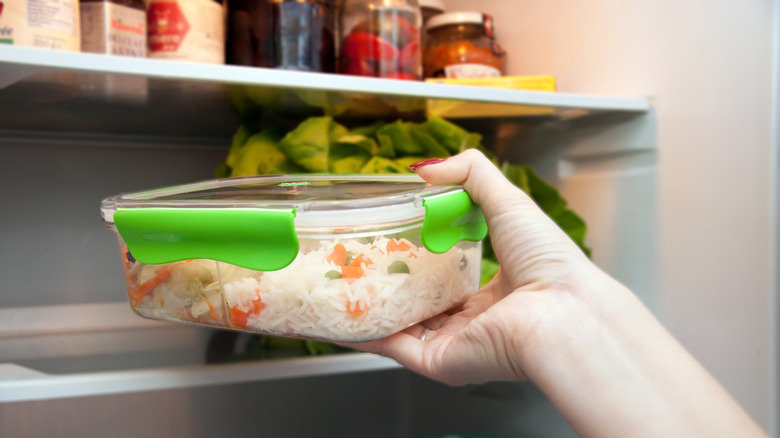When Do You Have To Worry About Fried Rice Syndrome?
It's no secret that proper cooking and storage are essential for food health and safety, and starchy foods are no exception. While raw animal products are responsible for some of the more common kinds of food poisoning, the Bacillus cereus (B. cereus) bacteria thrive on starches like rice and pasta. The toxins from this pesky bacterium can wreak havoc on your digestive system, leading to what has been dubbed "fried rice syndrome" — sometimes called "leftover rice syndrome."
While any starchy food may be contaminated, the name for this specific type of food poisoning arose from the fact that preparation methods for fried rice can create the perfect environment for B. cereus to multiply. Early documented cases were tied to preparation methods in some restaurants where white rice was cooked in advance, kept at warm or ambient temperatures, and later used to make fried rice.
While an oft-repeated cooking tip to upgrade your fried rice is to employ day-old rice for a superior, crispy texture, proper storage is crucial. When cooked rice is left unrefrigerated, or leftovers are not handled carefully, conditions are ideal for B. cereus to grow and produce toxins.
How to spot the syndrome
Food poisoning of all kinds ranges from unpleasant to deadly, and fried rice syndrome is no different – though serious cases are rare. It can be hard to distinguish between a case of stomach flu and food poisoning, so it's imperative to be mindful of food safety and avoid spoilage.
Symptoms of fried rice syndrome include nausea, vomiting, diarrhea, and fever. Incubation time is short, and symptoms will appear just 30 minutes to six hours after eating contaminated food. Cases are generally mild and last less than 24 hours, but some individuals have an increased chance of complications. Those at higher risk include children under five, the elderly, immune-compromised people, and pregnant people.
Unfortunately, there is no quick fix, but professionals recommend hydration and rest until symptoms subside. Of course, you should always consult your doctor and seek urgent medical attention if symptoms become severe or do not improve. The best defense against this unpleasant poisoning is to avoid consuming spoiled foods in the first place. Dining at trusted establishments with adequate food safety practices is always ideal, and knowing how to properly store and prepare your food at home is a must.
Keep it safe
So, how can you make sure that your leftover rice is safe to eat? While raw rice and pasta are safe to store at room temperature in a dry, sealed container, once cooked they must be refrigerated.
Cook your rice thoroughly in boiling water, and always wash your hands before preparing any meal. B. cereus is an especially sneaky bacterium, as spores can withstand the high temperatures at which rice and pasta are cooked, making safe storage after cooking especially important.
It's generally a good idea to eat your rice right away; otherwise, you should cool and store your leftovers within an hour or two of cooking. Leftovers should be reheated to a minimum of 165 degrees Fahrenheit (a good rule of thumb for many foods). If you want to revive leftover fried rice, be sure to use it within three to four days of initial cooking, as you shouldn't keep rice longer unless it's frozen.
And while it can be hard to say goodbye, you should always toss any questionable leftovers, even if they have been refrigerated. So cook your rice thoroughly, store your food safely, and use those leftovers quickly and deliciously!



